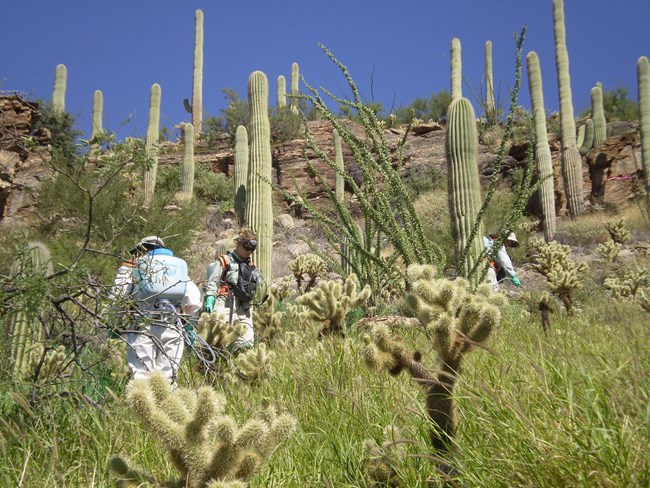
NPS Photo Management of buffelgrass includes mapping it, manual and chemical control, monitoring results, prevention of new infestations, continually adapting our management strategies and conducting research to answer important questions. Preventing buffelgrass from establishing in new locations within the park is a challenge because seeds can be dispersed by wind and therefore travel long distances. We work with park neighbors to help reduce the seed sources near the park. 
NPS Data 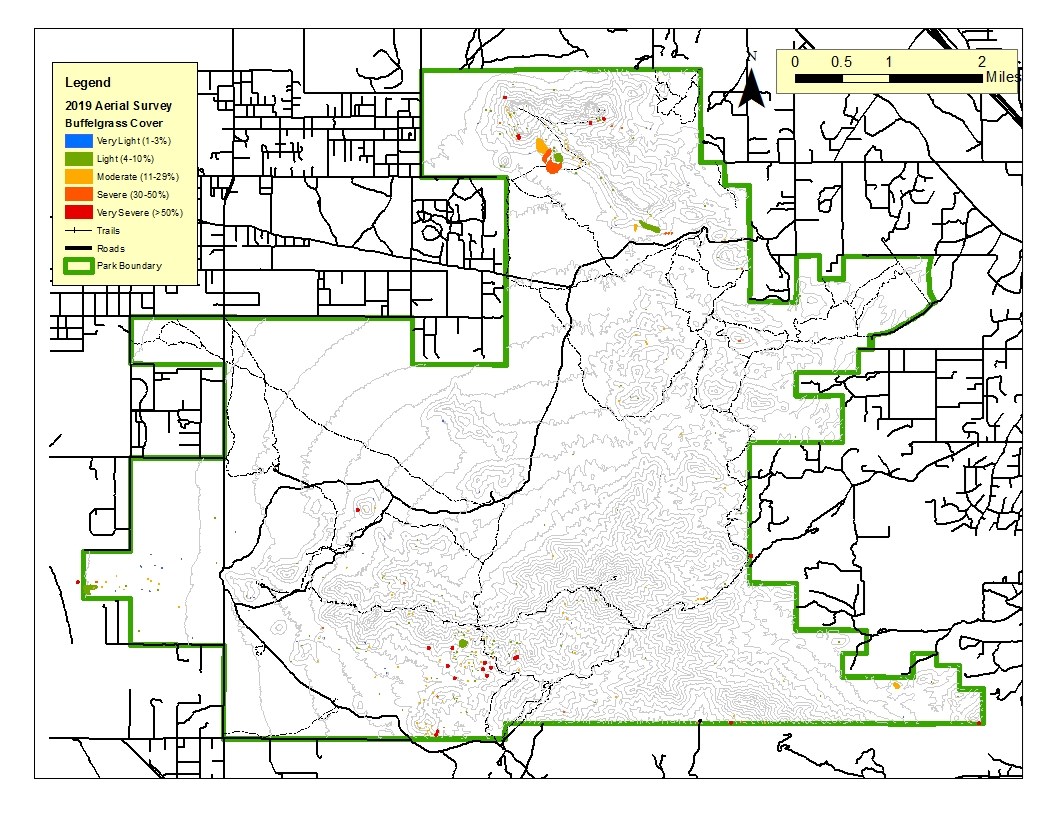
NPS Data 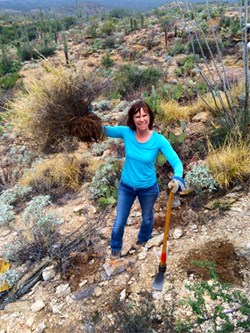
NPS Photo Buffelgrass is only susceptible to herbicide when it is over 50% green and growing, which is usually only a few weeks during the monsoon season and sporadically after winter rains. During this time, well-trained, physically capable crews hike into rugged backcountry terrain to spray buffelgrass with glyphosate-based herbicides. They wear personal protective equipment and carry heavy back pack sprayers. We also spray dense patches of buffelgrass that are too remote or too hazardous for people to reach on the ground with a helicopter. We use two different methods of aerial treatments against buffelgrass. The first is using a 40-foot boom-sprayer mounted to the bottom of a helicopter. The second method of treatment is with a spot-sprayer. 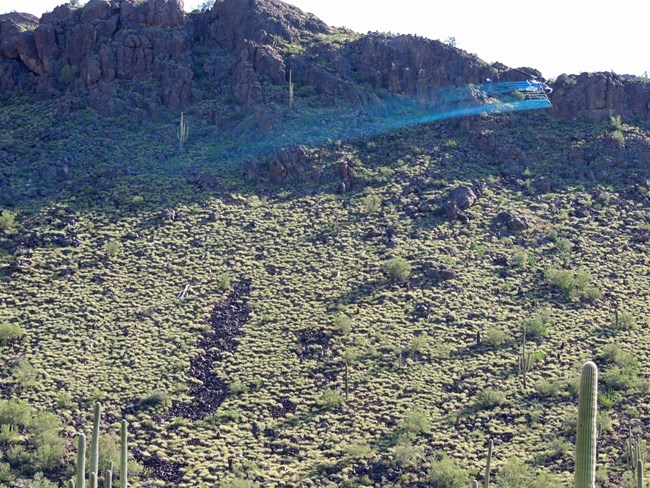
NPS Photo 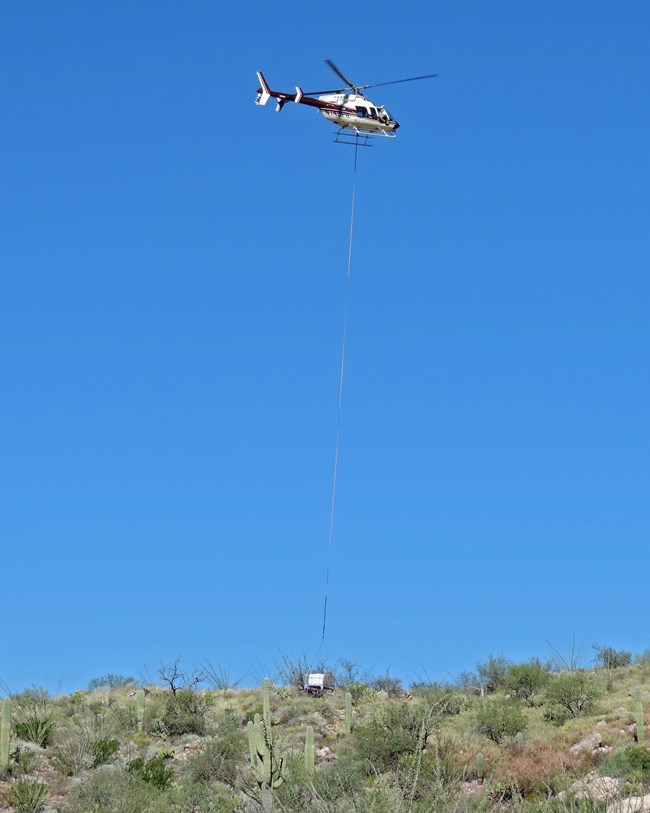
NPS Photo
Both methods of buffelgrass control, manual removal and herbicide, are successful. However, repeat visits to the treated areas are necessary because of viable seed in the soil. We have found that it takes at least three years of visits to eliminate buffelgrass from a particular site. We evaluate the success of our control efforts by measuring the change in the amount of buffelgrass coverage, before and after control efforts. All of these control methods were thoroughly documented, researched, and approved as part of an Environmental Assessment, which resulted in a Restoration Plan in 2014. It is by these approved guidelines that the park determines which treatment methods are appropriate in each area where buffelgrass is present. |
Last updated: May 6, 2025
